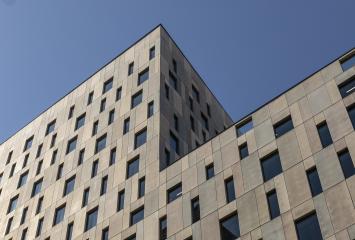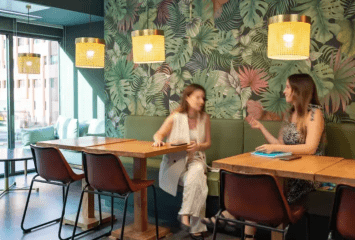Zero Carbon Footprint in Buildings: Strategies to Achieve It
Carbon neutrality, more commonly known as a zero carbon footprint, involves achieving a balance between greenhouse gas emissions produced and those offset. This environmental approach is crucial in today's world and, as we will see throughout this article, has highly positive implications for all social actors: citizens, workers, businesses, and, of course, all living beings around us. Its implementation is occurring in many sectors, but one particularly significant area is the construction and operation of buildings. What are the key strategies?
Renewable Energy
Recently, very promising data was released: for the first time in history, the growth of renewable energy has surpassed that of fossil fuels in Europe. However, this milestone, achieved in 2024, did not happen overnight but is the result of a gradual transition in which Colonial has been actively involved for a decade. One of the key aspects of our carbon-neutral assets is the use of clean energy sources such as wind and solar power—the latter being particularly profitable in one of the sunniest countries in Europe, alongside other southern nations such as Portugal, Italy, and Greece.
Illacuna, one of our office buildings in Barcelona, is a prime example of this full commitment to clean energy: it features a photovoltaic installation that produces approximately 36,000 kilowatt-hours per year. Another notable case is Colonial’s building at Avenida Diagonal 530, which boasts an advanced solar collection system. This not only benefits the planet and its ecosystems but also enhances the reputation of the companies that lease these buildings, helping them attract and retain top talent. Society is increasingly committed to green energy.
Another highly representative project of this commitment is Madnum, an office complex designed to achieve nearly zero energy consumption (NZEB, Nearly Zero Energy Building). Through efficient systems such as photovoltaic production, aerothermal technology, and a bioclimatic design, Madnum optimizes energy use and minimizes its carbon footprint, offering businesses a space that aligns with the highest sustainability standards.
Reducing Energy Consumption
Replacing polluting energy sources with cleaner alternatives is a necessary step toward achieving a zero carbon footprint, but reducing overall energy consumption is equally important. In this regard, our asset portfolio includes numerous examples of buildings where we have implemented measures to lower energy use, such as Wittywood. Its certified wooden construction material provides superior insulation, ensuring better thermal comfort inside and, therefore, reducing the need for heating and cooling systems—whether in the cold winter months or the peak of summer.
Additionally, many Colonial buildings feature an advanced resource management system called the Building Management System. This platform monitors and optimizes building operations in real-time, efficiently managing aspects such as climate control, lighting, and ventilation. As a result, the building consumes less energy on a daily basis, benefiting both the environment and the financial costs of tenant companies. Similarly, our newer buildings are constructed using locally sourced materials. This is our guiding principle: considering both operational efficiency and construction materials in our pursuit of carbon neutrality.
Emissions Offsetting
Colonial’s near-perfect score in the Global Real Estate Sustainability Benchmark Index is no coincidence—it is the result of a long-standing commitment to sustainability. While using green energy and reducing energy consumption are key factors, in some cases, additional offsetting measures are necessary to fully neutralize emissions.
These measures include implementing solutions within buildings that help remove greenhouse gases from the atmosphere. A prime example is Wittywood, where wood plays a crucial role due to its ability to capture and store CO₂.
But that’s not all: the primary emission offsetting strategy revolves around the installation of green spaces, as plants can absorb CO₂ from the air and convert it into oxygen. Our portfolio includes numerous examples of this approach. There's the central plaza garden at Madnum, the green areas of Sant Cugat Nord, the vertical garden at Francisco Silvela 42, and the lush interior vegetation at Utopicus Paseo de la Habana.
Together, these three strategies form the fundamental roadmap for achieving carbon neutrality—an objective that has never been more important than it is today.

